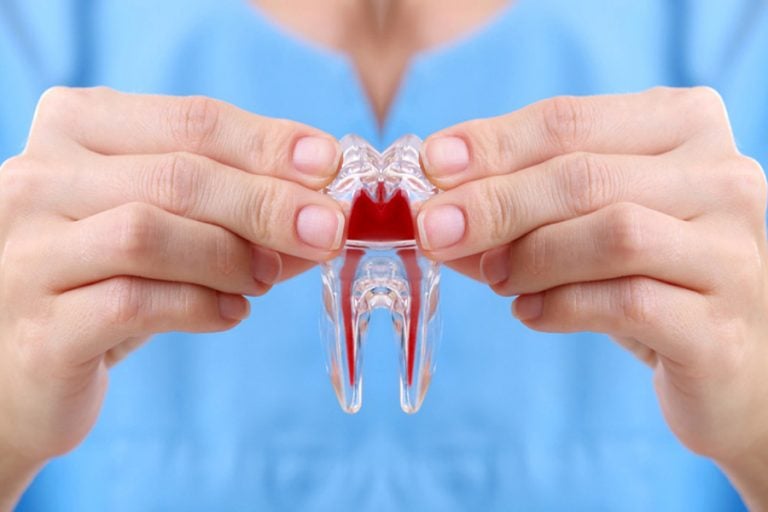Endodontics is a crucial and specialized field of dentistry dedicated to understanding and treating the inner structures of the tooth, particularly when issues arise within the dental pulp and surrounding roots. At our compassionate dental practice in Palm Harbor, we emphasize the importance of maintaining good oral hygiene to prevent conditions that can lead to tooth decay and infection. Our skilled team is committed to providing exceptional dental comfort, focusing on techniques that relieve pain and promote the overall health of your teeth.
One of the primary treatments within endodontics is root canal therapy. This procedure is essential for addressing tooth infections and is one of the most effective tooth sensitivity treatments available. When a tooth becomes infected, usually due to deep decay or trauma, the nerves and blood vessels within the dental pulp can become damaged or die, leading to severe discomfort. Our root canal therapy aims not only to alleviate this intense pain but also to preserve the natural tooth structure by removing the damaged tissue and replacing it with a biocompatible material. This restoration is vital for tooth preservation and helps avoid tooth extraction.
Understanding the layers of your teeth is essential to appreciate the significance of endodontics. The tooth consists of an outer enamel layer that protects the inner dentin and pulp. Beneath the enamel, the dentin forms a significant part of the tooth’s architecture, playing a crucial role in transmitting sensations to the nerves. The dental pulp, located within the root canals, houses the nerves and blood vessels that nourish the tooth. If you experience any tooth sensitivity or discomfort, it may signal an infection deep within the tooth. Seeking prompt treatment not only helps you avoid pain but is also a proactive step toward tooth decay prevention.
At our Palm Harbor practice, we combine advanced dental technology with a compassionate approach to patient care. Our team utilizes state-of-the-art diagnostic tools and treatment methodologies to ensure that your root canal therapy is as comfortable and effective as possible. We understand that many patients may feel anxious about dental procedures, so we prioritize creating a soothing environment and transparent communication. This commitment to patient education empowers you to understand the procedures and their importance in dental health.
In addition to root canal treatments, our practice offers various endodontic solutions tailored to meet your specific needs. For instance, if you experience issues at the tips of your tooth's roots, we can conduct dental microsurgery to address those concerns effectively. These advanced procedures are designed to manage pain and discomfort arising from endodontic issues while ensuring that your natural teeth remain intact.
The significance of tooth extraction prevention cannot be overstated. Losing a tooth can affect your overall oral health, alignments, and aesthetics. Our endodontic services focus on preserving your natural teeth, allowing you to maintain a complete and healthy smile. With our compassionate team, you can feel confident knowing that your comfort and well-being are our top priorities.
For families in Palm Harbor seeking comprehensive dental care, our practice is designed to cater to all ages. We provide family dental care that accommodates everyone's unique dental needs, and we ensure that even the youngest members of your family feel at ease during their visits. By focusing on family-oriented dental practice, we strive to make routine check-ups and emergency visits a stress-free experience for everyone.
Your dental health is an ongoing journey, and we are dedicated to being your partners in this process. As part of our commitment to patient education dentistry, we not only offer treatment but also provide resources and information on maintaining good oral hygiene habits at home. This includes advice on tooth sensitivity relief techniques, proper brushing and flossing methods, and dietary choices that can support dental health.
For patients considering all their options, including cosmetic dentistry services, we understand that aesthetics and functionality go hand in hand. Treatments like dental implants in Palm Harbor help restore the integrity and beauty of your smile, further enhancing the benefits of our endodontics services. Patients interested in smile makeovers or Invisalign will find our holistic approach beneficial, as we coordinate all aspects of their dental care to achieve optimal results.
Moreover, we believe that quality dental care should be accessible, which is why we offer various dental financing options. Our goal is to make sure that finances do not hold you back from receiving the essential treatments you need, including advanced tooth sensitivity treatments and root canal therapy.
In summary, endodontics is a vital aspect of maintaining dental health, focusing on the complex inner workings of your teeth. By addressing infections and providing relief through procedures such as root canal therapy, we help preserve your natural smile while promoting overall well-being. Our compassionate team in Palm Harbor is here to ensure that you and your family receive the highest standard of care in a supportive environment. Emphasizing dental comfort, patient education, and tooth extraction prevention, we aim to build lasting relationships with our patients while safeguarding their oral health for years to come. Should you have any concerns or questions regarding your dental health, we invite you to reach out. Experience the difference that expert endodontic care can make for your smile!

The field of endodontics is a specialized field of dentistry that focuses on the inner tissues and makeup of the tooth structure. This is an area of the tooth that can deteriorate over time if proper oral hygiene is not maintained. When this happens, a common treatment to correct this infection is root canal therapy, which aims to eliminate any sensitivity or discomfort caused by an infected tooth root. This treatment is two-fold: not only does it relieve pain, but it leaves an infected tooth in a healthy and disinfected state by replacing the infected tooth root with a replacement material. In addition, root canal treatments help save teeth from extraction by preserving the entire tooth. In addition to root canals, there are many other endodontic treatments that address concerns affecting the roots of teeth – microsurgeries can be performed that address issues with the tips of the tooth’s roots, and other types of treatments can be leveraged that help address pain and discomfort stemming from endodontic issues. Overall, there are many ways in which the field of endodontics can help preserve your natural teeth!
What Goes On Inside The Tooth?
Do you know what happens inside the tooth? Lying beneath the tooth’s enamel (the surface layer of the teeth), is a thicker layer of material called dentin, which, accounts for a large amount of the tooth’s structure. Dentin also helps translate stimulation to the nerves of your teeth when triggered.
Within the inner canals of the tooth, called root canals, is the pulp of the tooth, which consists of nerves and blood vessels that are attached to the center of the tooth. When infection or other issues arise in this area of the tooth, the first thing you may notice is discomfort and sensitivity. In some cases, patients may experience intense pain. If this infection continues without treatment, this pain will subside as the nerve cells begin to die. However, this will not fix the issue of inner tooth decay – when prolonged, ignoring this issue can result in teeth being extracted. This is where endodontic treatments come in to save the day (and your teeth)!
What Can Cause Endodontic Issues In The First Place?
Many patients often wonder what leads to root canal complications in the first place, as these structures are located within the tooth and not the surface where they can be subjected to food particles and plaque. It’s important to note that as tooth decay is prolonged, bacteria from the surface of the tooth can find itself inside the tooth’s surface. Cracks in damaged teeth can quicken this process, making it even more important to correct severe tooth trauma like this as soon as possible after the trauma occurs.
Endodontic Trauma — Many types of dental injuries can result in damage to the inner layers of the tooth. Sports injuries, for instance, can expose the inner layers of the tooth such as the pulp and dentin to outside infection they do not normally come in contact with. If a tooth breaks, chips, or cracks, infections like these can take place. Even occurrences like a large number of dental fillings being applied in a short time span can expose the inner layers of the tooth to infection. As stated above, it’s important to have dental trauma addressed as soon as possible after occurring to prevent any potential interior infection.
An Overview of Endodontic Treatments
In all of dentistry, root canals are perhaps the most dreaded of routine procedures. However, thanks to modern advancements in dentistry and sedation, there’s no need to fear a root canal! Keep in mind that the goal of root canals is to relieve discomfort and pain, not add to it. Many patients aren’t aware that with local sedation (similar to what patients receive during a filling), most patients feel little to no discomfort when undergoing a root canal procedure. Here’s a breakdown of how these procedures are performed:
These procedures will begin with a numbing agent, this shot being the most uncomfortable part of the procedure for some patients. Then, your doctor will access the inner layers of the tooth through a small opening that is made, which allows them to access the inner chambers and roots of the tooth. Dead and infected material is then removed using small tools, and these areas are then disinfected to prevent further complications, and the infected material is replaced with a safe, synthetic material.
After your treatment, your dentist may recommend other treatments that help prevent further endodontic concerns such as certain restorative treatments, crowns being one example, that help preserve the full functionality and appearance of your teeth. When endodontic concerns are addressed properly, these teeth should remain healthy for years to come.
